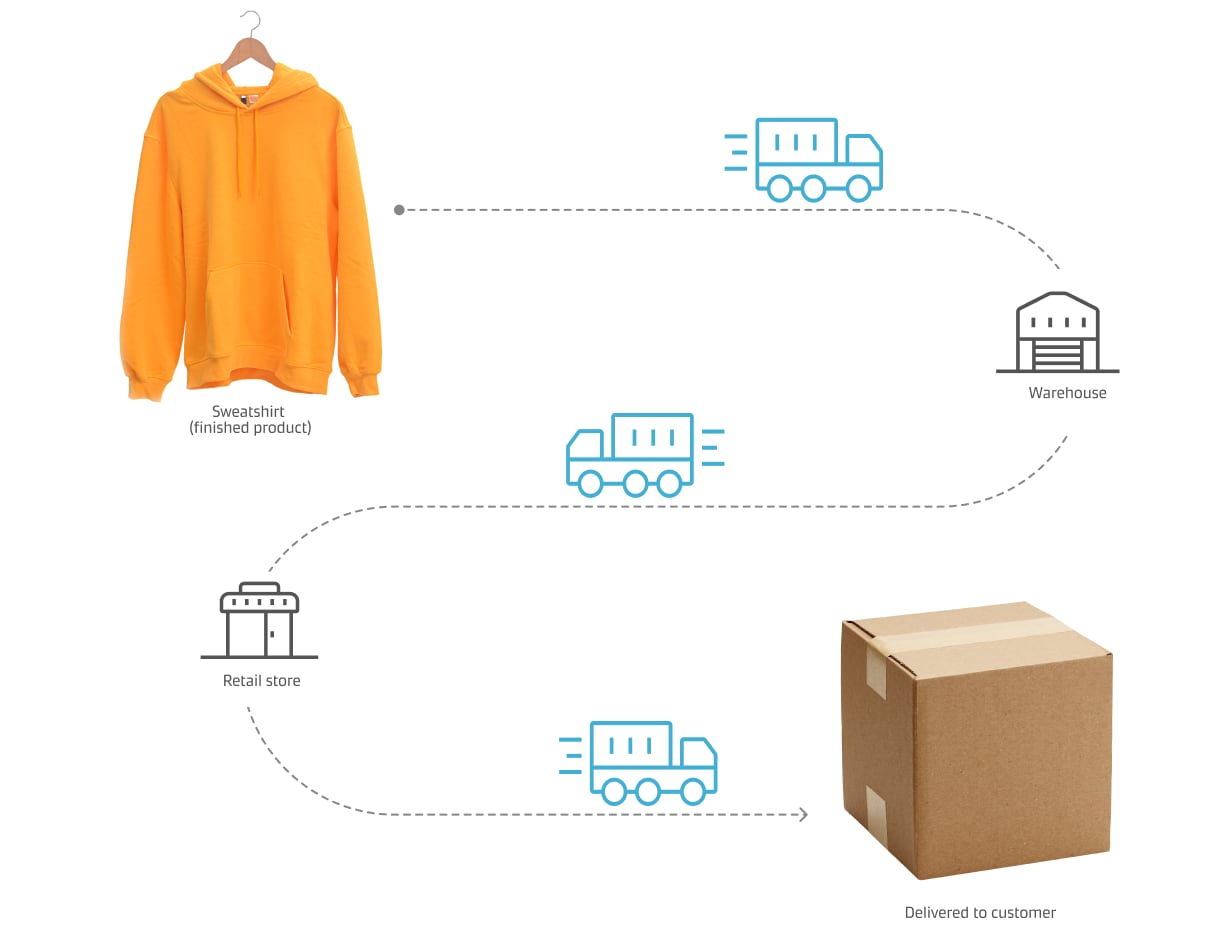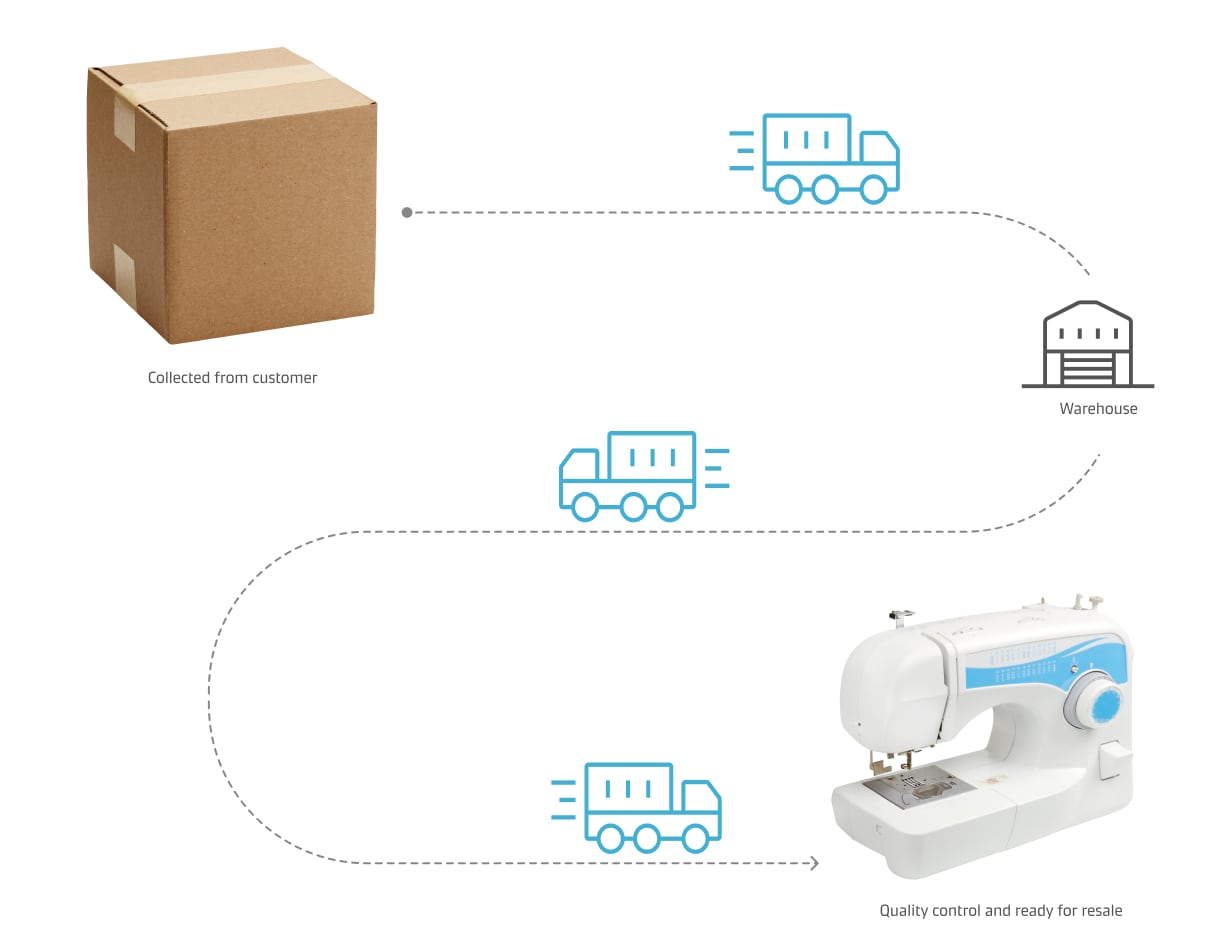Put simply, logistics can be broken down into three different categories: inbound, outbound, and reverse. In this article we explore the distinctions between these types of logistics. To help visualise these processes, we’ll follow the movement of a sweatshirt throughout its inbound, outbound, and reverse logistics journey.
Inbound logistics
Inbound logistics focuses on the supply part of supply and demand. It's all about the movement of raw materials to production. For example, transporting the raw materials necessary for the production of goods, tools needed for manufacturing, consumable products like fuel or energy, and additional spare parts or components.
Inbound logistics also includes business processes like:
- Raw material sourcing
- Inventory management
- Warehousing
- Transportation
- Production
So where is our sweatshirt within its inbound logistics journey?
Our sweatshirt begins as raw cotton, where it is shipped from the farm to a textile plant. At the textile plant, the raw cotton goes through the processes of spinning, weaving, and dyeing; to yield a bolt of fabric. Then, a procurement manager has arranged for this fabric to be sent to the manufacturing plant, equipped with the labour, energy, and machinery necessary to turn our raw materials into a finished sweatshirt.

Outbound logistics
Outbound logistics focuses on the demand part of supply and demand. It’s all about transporting the finished goods to the customer or end user. While the finished product requires transportation to the retail location, fulfilment centre, or end consumer; this process is also comprised of many different business functions such as:
- Order fulfilment
- Packing
- Shipping
- Delivery
- Customer service
So where is our sweatshirt within its outbound logistics journey?
Now that our sweatshirt is a finished product, there are several places it may go after the production facility. Depending on the business model of the company selling our sweatshirt, it could go into a warehouse, to be held before being sent to a retail store. Or, it could go straight to a fulfilment centre, ready to be sent directly to the end consumer when they place their order.
Whether it is to a fulfilment centre or a shopping centre; the transportation, facilities, and business processes that brings the sweatshirt from manufacturing to our closets are all part of the outbound logistics ecosystem.

Reverse logistics
Reverse logistics focuses on finished products going back into the supply chain, from the end use to either the manufacturer or retailer. Most simply, product returns are the primary reason for the function of reverse logistics — when a customer sends the product they bought back to the company, it enters the supply chain again. However, reverse logistics can also include the return of surplus materials, leased manufacturing equipment, or end-of-life product recycling. This process can be a complex dance of numerous business functions, including:
- Customer service
- Transportation
- Inventory management
- Remanufacturing
So where is our sweatshirt within its reverse logistics journey?
Although we were excited to receive our sweatshirt, unfortunately it was the wrong size. So, after contacting customer service and getting return shipping information, we’ve sent the sweatshirt to a warehouse where it will be inspected, sorted, repackaged, and resold.
Luckily, there were no quality defects with our sweatshirt, so it does not need to be recycled or remanufactured; though these functions would also be part of the reverse logistics of such a product. If our sweatshirt manufacturing company went out of business, the return of machinery and facilities to their leaseholders would also constitute reverse logistics.

Sign up for our logistics newsletters
Receive news and insights that help you navigate supply chains, understand industry trends, and shape your logistics strategy.
Thank you for signing up
An unexpected error occurred
Sorry but we were unable to sign you up for newsletters.












